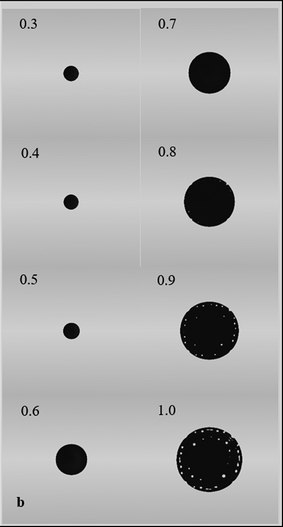Crossref Citations
This article has been cited by the following publications. This list is generated based on data provided by
Crossref.
Chaussonnet, Geoffroy
Bravo, Luis
Flatau, Alison
Koch, Rainer
and
Bauer, Hans-Jörg
2020.
Smoothed Particle Hydrodynamics Simulation of High Velocity Impact Dynamics of Molten Sand Particles.
Energies,
Vol. 13,
Issue. 19,
p.
5134.
Ganti, Himakar
Khare, Prashant
and
Bravo, Luis
2020.
Binary collision of CMAS droplets—Part II: Unequal-sized droplets.
Journal of Materials Research,
Vol. 35,
Issue. 17,
p.
2275.
Jain, Nishan
Le Moine, Alexandra
Chaussonnet, Geoffroy
Flatau, Alison
Bravo, Luis
Ghoshal, Anindya
Walock, Michael J.
Murugan, Muthuvel
and
Khare, Prashant
2021.
A Critical Review of Physical Models in High Temperature Multiphase Fluid Dynamics: Turbulent Transport and Particle-Wall Interactions.
Applied Mechanics Reviews,
Vol. 73,
Issue. 4,
Erazo, Santiago
Day, Joseph A.
Gamertsfelder, Jacob
Khare, Prashant
and
Quinlan, John M.
2021.
Pintle Injector Spray Atomization: Liquid Sheet Breakup Quantification.
Tripathi, Mitansh
Ganti, Himakar
and
Khare, Prashant
2022.
Interactions Between Shock Waves and Liquid Droplet Clusters: Interfacial Physics.
Journal of Fluids Engineering,
Vol. 144,
Issue. 10,
Pathan, Refat Khan
Lim, Wei Lun
Lau, Sian Lun
Ho, Chiung Ching
Khare, Prashant
and
Koneru, Rahul Babu
2022.
Experimental Analysis of U-Net and Mask R-CNN for Segmentation of Synthetic Liquid Spray.
p.
237.
Stein, Zachary
Cavainolo, Brendon
Tetard, Laurene
Kinzel, Michael P.
Naraparaju, Ravisankar
Schulz, Uwe
and
Raghavan, Seetha
2023.
CMAS Infiltration and Mitigation Strategies for Minimizing Premature Degradation Failure of High Temperature Ceramic Coatings in Turbine Engines.
Ganti, Himakar
Bravo, Luis
and
Khare, Prashant
2023.
Interactions between high hydrogen content syngas–air premixed flames and homogeneous isotropic turbulence: Flame thickening.
Physics of Fluids,
Vol. 35,
Issue. 7,
Wu, Nannan
Wang, Yalei
Tong, Yongle
Tan, Yulin
Liu, Huaifei
Xiong, Xiang
and
Liu, Rutie
2023.
Interaction of ytterbium monosilicate environmental barrier coating material with molten calcium-magnesium-aluminosilicate (CMAS).
Corrosion Science,
Vol. 211,
Issue. ,
p.
110864.
Pathan, Refat Khan
Lim, Wei Lun
Lau, Sian Lun
Ho, Chiung Ching
Bravo, Luis
Koneru, Rahul Babu
and
Khare, Prashant
2023.
Application of Computer Vision Techniques to Identify Spray Primary Breakup Structures in High-Speed Flow.
p.
468.
Kamin, Manu
Eblin, James
and
Khare, Prashant
2023.
The NexGen burner: Non-Reacting gaseous and spray dynamics.
Physics of Fluids,
Vol. 35,
Issue. 11,
Redding, Jeremy
Gamertsfelder, Jacob
Bravo, Luis
and
Khare, Prashant
2023.
Thermochemical non-equilibrium hypersonic flow over a rectangular cavity embedded on a compression ramp.
Physics of Fluids,
Vol. 35,
Issue. 12,
2024.
Dynamics of a Liquid Droplet.
